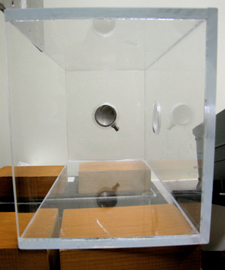Therapeutic Applications of Ultrasound
Ongoing work in the Dalecki lab is dedicated to discovering and advancing novel therapeutic applications of ultrasound. Therapeutic applications of ultrasound depend upon the direct interaction of the sound field with the tissue to produce the desired effect. For example, lithotripsy is the use of high intensity acoustic shock waves to fragment kidney stones non-invasively.
Many new ultrasound therapies are on the horizon, including drug delivery, wound healing, thrombolysis, high intensity focused ultrasound surgery, and gene transfection. Efforts focus on understanding the fundamental molecular, cellular, and physical mechanisms underlying therapeutic ultrasound approaches. Knowledge of basic mechanisms provides the power to design optimized exposure parameters, identify synergistic therapies, and engineer exposure systems that maximize the therapeutic effects of ultrasound while minimizing adverse side effects.
This line of research has been funded by the National Institutes of Health (NIH) and The Whitaker Foundation.
 Ultrasound transducer and exposure chamber.
Ultrasound transducer and exposure chamber.
Researchers:
Diane Dalecki, Ph.D.
Biomedical ultrasound, acoustics, lithotripsy, biological effects of ultrasound.
Sheryl M. Gracewski, Ph.D.
General area of solid mechanics, more specifically in wave propagation and vibrations in elastic media
Denise C. Hocking, Ph.D.
Regulation of cell behavior by the extracellular matrix
Ingrid H. Sarelius, Ph.D.
Vascular cell communication and signaling
